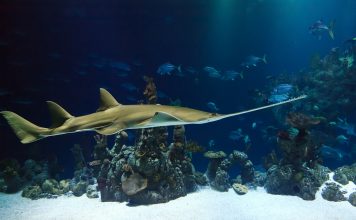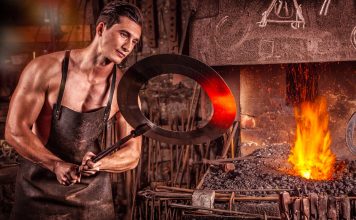Zeewolde, the Netherlands, 3 March 2009 – Spyker Cars, manufacturer of exclusive premium sports cars since 2000, today proudly introduces the production version of its all-new second-generation sports car: the Spyker C8 Aileron, the prototype of which was shown at Geneva in 2008.
Victor R. Muller, Spyker Cars’ founder and Chief Executive Officer said on the occasion of the unveiling: “When we unveiled the C8 Aileron prototype here last year, we wanted to make a clear statement to the industry that Spyker was about to take the next step in its short but intense history, by introducing its second-generation sports cars, developed from scratch. Within a year we transformed that prototype into the production-ready car we show here today. The first cars are being built now with customer production and deliveries starting in May 2009.
The C8 Aileron’s design is heavily inspired by Spyker’s aviation heritage, as was the case with all previous models, but with a clear emphasis on the second-generation aircraft propulsion: the turbine rather than the propeller that adorned so many elements of the first-generation cars. Similarly the “Aileron” name pays tribute to that aviation heritage.
It is the device that makes an aircraft turn and symbolizes the turning point that the Aileron is for Spyker: the car which will turn the company towards long-awaited profitability.”
SPYKER C8 AILERON: A COMPLETELY NEW CAR All-Aluminium Space frame Chassis
The Spyker C8 Aileron’s all-aluminium space frame was completely redesigned from scratch with the objective to increase torsional rigidity and to incorporate an all-new suspension system. These characteristics provide an ideal foundation for enhanced vehicle dynamics.
Moreover, the C8 Aileron’s dimensions have been optimised for more interior space and to
accommodate the optional automatic gearbox. Compared to the short wheelbase of the firstgeneration cars – the Spyker C8 Laviolette and C8 Spyder – the wheelbase of the C8 Aileron is 150 mm longer, also providing for more driving comfort and stability at high speeds. Its front track has increased by 155 mm. The total dimensions of the front and rear track are now 1625 mm and 1645 mm respectively, which improves road handling significantly.
Spyker has put tremendous efforts in the space frame performance of the C8 Aileron, specifically the structure’s efficiency. The utilisation of modern finite element and numerical optimization methods has allowed Spyker’s engineers to arrive at an exceptionally stiff structure of 22.000Nm/degree. Rigidnode and load-path technology has been employed in order to ensure that the minimum amount of aluminium is used to achieve this performance, thus reducing the overall weight of the vehicle. The dynamic stiffness characteristics of the structure have been carefully tuned in order to minimize unwanted cabin noises and vibrations, which may otherwise detract from the driving experience. These technologies and measures have allowed Spyker to arrive at the most efficient chassis in its history.
In order to enhance the aerodynamic performance of the car, several changes in styling were made, such as stretching the canopy backwards. Most of the shark-like gills have been abandoned, which results in a cleaner, smoother appearance. The front end is now characterised by a larger grille that gives additional cooling. Also the rear diffuser was redesigned for improved functionality. An extra spoiler has been placed under the diffuser, providing additional downforce to boost the ground effect produced by the diffuser.
Sometimes practicality gains over design: the split side windows with the characteristic metal frame have been replaced by single-pane side windows that are fully retractable, improving driving comfort. The outside mirrors, standard in body colour, were redesigned and the mirror body is mounted on two turbine fan blades.
The rear lights are made of LEDs (light-emitting diodes). LED lights were also used for the indicators and the sidelights in the redesigned headlight units. The style of the headlights is particularly eyecatching as they follow the body design more closely. This characteristic styling can be defined as a part of the (future) Spyker identity first seen on the Spyker C12 Laturbie and subsequently in the Spyker D8 Peking-to-Paris. In fact, the latter will use the identical headlight units to those of the Aileron.
The C8 Aileron is available in 16 standard colours, but customers may choose any colour they wish as an option, as well as the Spyker Squadron GT2 colour scheme. The standard colours have been developed by Sikkens Autolakken Nederland and AkzoNobel Car Refinishes. Spyker selected these companies because of their high quality standards and their flexibility to meet with special requirements. Some of the standard colours have been created especially for the C8 Aileron.
Driver and passenger sit low, close to the car’s centre of gravity, where they can feel the car reacting to the input of the driver, for a direct and sporting connection between car and driver.
The dashboard was completely redesigned to suit the new Spyker identity and to improve ergonomics and functionality. Air vents are designed in turbine style and the performance and distribution of the air conditioning was improved significantly. A multifunctional LCD display is integrated between the speedometer and the odometer. The middle console accommodates the standard Kharma sound system (see In-Car Entertainment). Chronoswiss dials and switches are available as an option. More space was created around the Spyker characteristic floor-mounted pedal box. The impression of professional functionality and ergonomic styling is enhanced by the optimised positioning of the door handle and the hand-brake lever.
The presence of a Kharma sound system in the Spyker C8 Aileron marks Kharma’s debut in the world of automotive entertainment. Kharma International produces high-end audio products and sells worldwide through a network of highly qualified distributors and dealers. All sound systems are developed, assembled and tested in the Netherlands, with the utmost care by a team of highly engaged specialists. These characteristics of high-quality products and exclusiveness are in line with Spyker’s brand values craftsmanship and exclusivity.
The Aeroblade™ wheels of the first-generation cars are replaced by newly-designed 19-inch alloy wheels. New 10-blade, 19-inch directional rotor wheels, branded Rotorblade™, are available as an option. These wheels are inspired by the turbine blades of a jet engine, which hints the new styling direction while respecting the aviation heritage. The 235/35 size tyres at the front and up to 295/30 at the rear provide the necessary road holding.


































